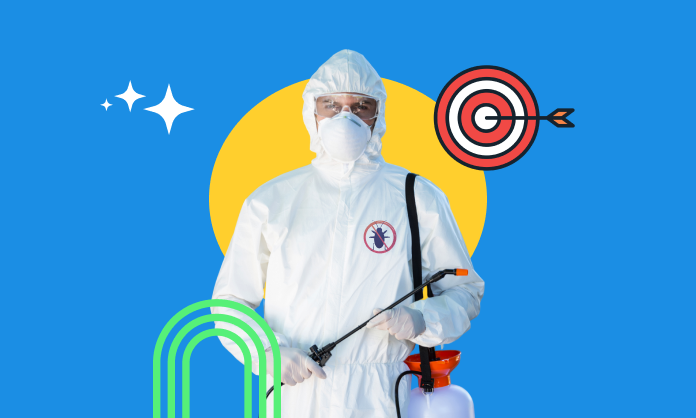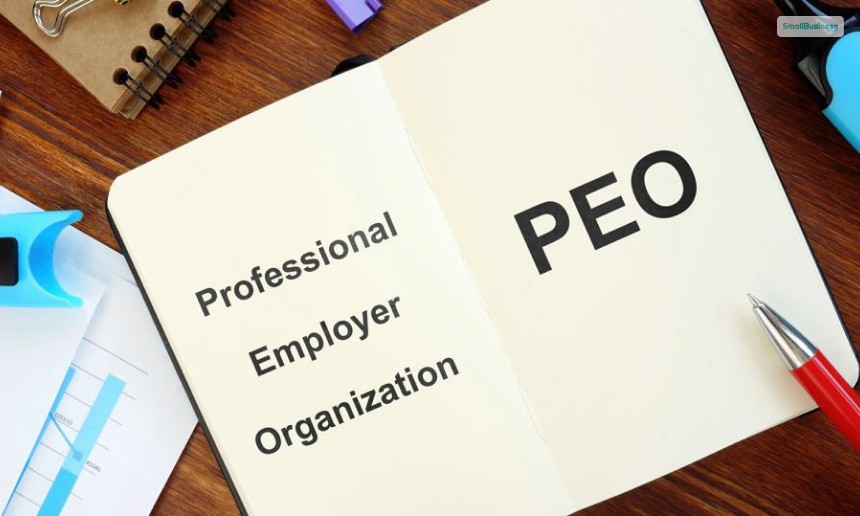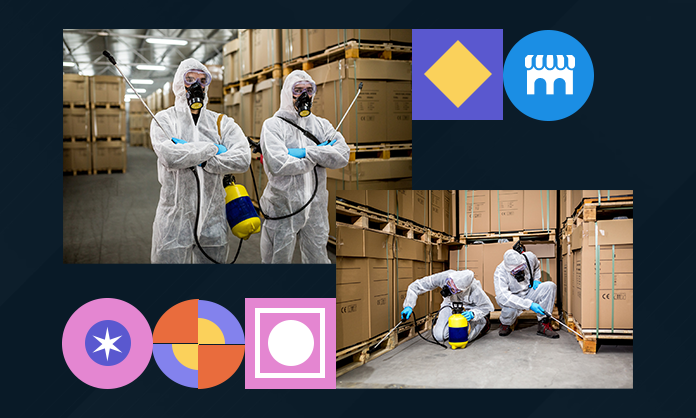The pest control business is booming. Several market researchers suggest it will grow at a 5.20% CAGR between 2024 and 2032. Let’s understand about the best Pest Control Business Leadership Strategy.
Given the growth prospect, many small pests control business owners are eager to take advantage of the current market and the upcoming growth.
However, it requires efficient leadership to strategize, compete, and sustain your business in the ever-changing market.
This article shares the strong leadership tactics you can use to sustain and succeed in your pest control business.
1. Understanding the Pest Control Market
A pest control leadership strategy for your pest control business doesn’t build your business in a silo. If done right, it can transform the positioning of your business in the regional market and grow it as your business scales.
It starts with identifying the target market, understanding the emerging trends, analyzing customer needs, weaknesses and strengths of the competitors, and more.
This affects your small pest control business: you know how your customers think, you can develop a better pricing model, marketing campaigns can become more personalized, and your business will achieve operational efficiency.
All these cumulatively put your business in a state of market leadership.
In addition, stay compliant with the state, local, and federal government standards. Learn what new pests your employees face to strategize solutions for the larger market needs.
2. Building a Strong Team
A non-negotiable factor for setting up a winning pest control business is building an ever-evolving, resilient team with a strong work culture.
Hire a team of people with industry-standard skills and training. It helps recruit people with substantial work experience and professionalism to take your business forward. But, on top of their technical training and pest control skills, you need a team of people who are comfortable working with diverse groups of people.
Build a culture where open communication is practice and create a framework to evaluate performance and provide constructive feedback constantly.
Hiring the right people: Look for people with strong biology and environmental science backgrounds and work experience.
Prioritize certifications: prioritize skills, necessary licenses, and certifications made obligatory in your region.
Assess soft skills: before hiring your employees, assess their communication skills.
It’s also essential to build a framework for comprehensive employee training. It can be related to pest identification, safety procedures, and treatment methods. Ensure that the industry regulations are also part of the training.
Foster a Safety Culture: pest control jobs can often be dangerous. Some insects and rodents are often poisonous and can be reasons for health hazards. It’s critical to enforce the proper use of PPE kits.
3. Pay Attention to Pricing Strategy
You can only build your pest control strategy by considering a strong and proper pricing strategy. This is just as important as doing something else.
Your customers need the value your services provide. But, selling it at a price cheaper than the market standard might put your value standard at a lower scale.
Many pest control business owners make the mistake of charging too much for their services. On the contrary, some sell their services for a very low price. Selling your service for a cheaper price can also cost you a few services.
Your service charges should complement the value you add to your customers’ lives. You can lead to better customer retention, and your employees will remain satisfied.
4. Strategic Planning and Goal Setting
The right pest control strategy starts at the very inception of your business. Build a structured approach to your business when setting your goals for the business. Setting measurable targets and the process for business operations is also part of building a leadership strategy for your pest control service.
While building your goal, ensure that you are covering the following key components –
SWOT Analysis
It’s critical to evaluate the internal strengths and weaknesses while also recognizing the external threats and opportunities. Run a SWOT analysis on your business and stay compliant with regulatory terms to transform your business.
Mission Statement
What is the core purpose of your pest control business? What are the long-term aspirations of your business, and how do you approach your decision-making process? The mission and vision statement for the pest control business is also part of a successful pest control leadership strategy.
Identify KPIs
What are the metrics for measuring your successful business operations? Most businesses use customer satisfaction scores, service call response times, and success rates to eradicate pests.
Allocate Resources
Having a plan isn’t enough. You need people to effectively execute your plan. That’s why it’s critical to allocate your resources in the right position and at the right time.
Effective Communication
One of the key leadership strategies in pest control business is to communicate effectively. You must maintain transparent communication with clients, stakeholders, and employees to foster relationships and work towards a solution.
There are several benefits to effective communication when managing your pest control business. The following are a few examples –
5. Improving Customer Satisfaction
Practice active listening and empathy to understand if your customer’s needs are being addressed. This not only helps you provide a more efficient service but also helps foster a good customer relationship.
Boosting Efficiency
Strong communication helps you lead a business that’s constantly improving its efficiency.
Transparency
With transparent and clear communication, pest control businesses can promote transparency and stay accountable for their services.
Facilitate Collaboration
A firm grip on communication helps facilitate collaboration among employees, customers, and stakeholders.
Create an open work environment where people feel comfortable to communicate. It helps to hold team meetings regularly to discuss goals, challenges, and successes.
Ask your technical team for feedback and ask your customers for testimonials on the services. Effective communication also requires using seamless communication channels like Slack, Microsoft Teams, or Skype.
Customer Relationship Management
With good CRM, you can improve your business operations and customer services. Most importantly, you can identify potential problems, drawbacks, and gaps in the operations’ service, marketing, and other parts. The end result can be an improved level of sales.
6. Innovation & Adaptability
It helps you use the latest technologies for your pest control business. Try researching and knowing about newer technologies that are trending. Find out how well and efficiently you can use them for your pest control business.
Did you know that popular companies are shifting away from using pest control chemicals? Instead, try new technologies for pest control. Now, there are AI-powered monitoring systems and eco-friendly traps for rodents and pests devoid of harmful chemicals.
IoT in Pest Control
A new trend in the industry includes the use of IoT or the Internet of Things. It’s the process of embedding objects with the tech sensors that send signals to other systems connected to the internet.
Efficiency: IoT increases efficiency in tracing pests and identifying them. Thanks to IoT, technicians don’t have to focus on identifying and finding therapists.
Convenience: Compared to regular inspections, the use of IoT is cheaper. It detects the activities of the pests earlier and prevents pests from damaging crops.
Real-Time Data: Thanks to real-time and round-the-clock data provided by the IoT, it is easier to set up traps and control pests.
Biological Pest Control Solutions
Biological pest control solutions are also currently trending. Most businesses in the industry are aware of the environmental impact of using chemicals to control pests.
Biological pest control does not use synthetic pesticides and, hence, isn’t bad for the environment. It’s a sustainable approach to pest control that keeps the balance of different insects and rodents at a healthy level in the environment.
Conclusion
From setting a strategic vision to training staff, enforcing PPE, and using newer technologies, pest control leadership strategies have effects on a wider aspect of the business. It would help us to focus on the different aspects of the pest control business.
You can try out these tips if you are thinking of starting a successful business in this industry. Hopefully, this article added value to your life. Share your feedback through the comment section. Thank you for reading.
For More Business Related Information Click Below!!!




Leave A Comment